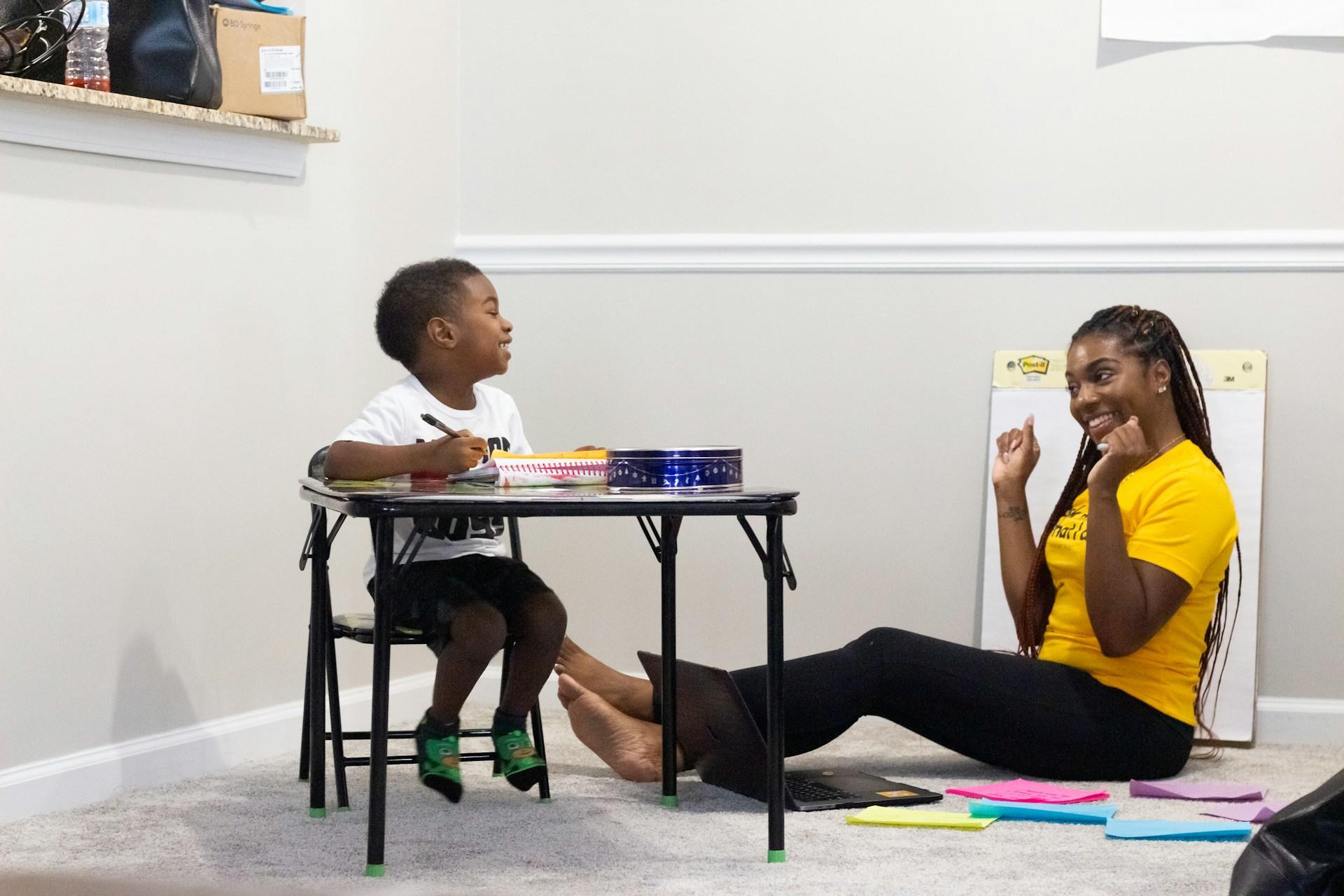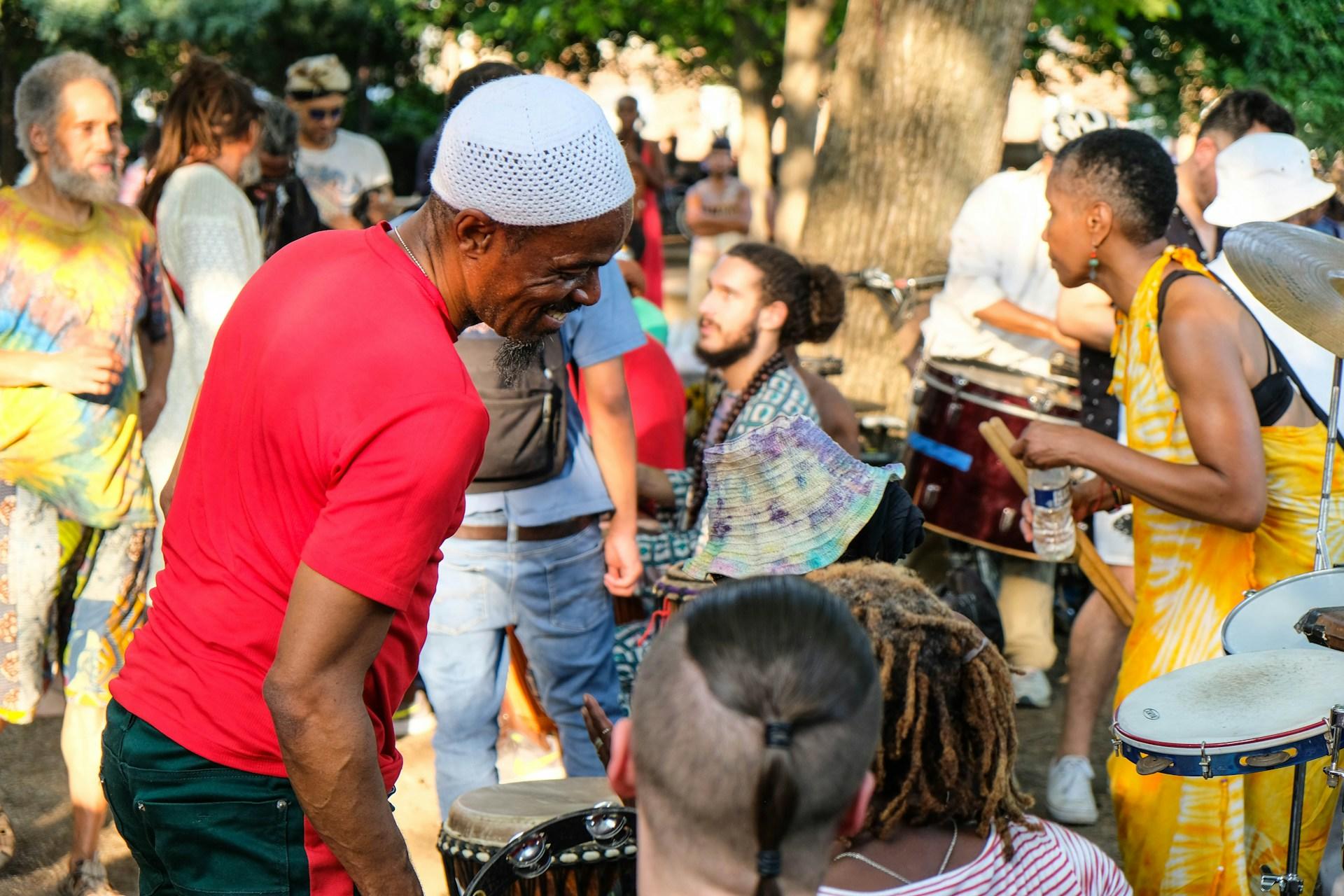National Windrush day is an important day of reflection and celebration for many families and communities in the UK, a chance to reflect on national identity and feel a sense of real belonging to a community.
Naturally, by extension this is something that should be reflected in the classroom, and on Windrush day taking some time to theme your lessons around the Windrush generation can be a great way of enhancing your lessons.
But how exactly do you even do this? Unlike more traditional days of celebration, Windrush day should be approached sensitively and carefully to make sure it feels genuine. After all, national identity and a sense of belonging are very important to many people!
Today we are going to go over some simple ideas you could employ to help make your Windrush day lessons feel genuine and engaging for all your students!

Want to give private lessons?
Join the Superprof community and share your knowledge with interested and motivated students.
?️ When is National Windrush Day?
National Windrush Day falls on the 22nd of June, and Windrush Day 2024 will be the 76th anniversary of the Empire Windrush ship arriving, which marked the start of what we call the Windrush generation.
The Windrush generation is more generally just anyone who immigrated to the United Kingdom from the Caribbean between 1948 and 1971, although this was first marked by the 1,000 or so immigrants aboard the Empire Windrush.
This generation of immigrants had a huge positive impact on the British economy, although despite this they often faced harsh and poor treatment. This is why Windrush day is so important to celebrate!
?10 Windrush Day Teaching Ideas
Interactive and engaging activities in the classroom are without a doubt one of the best ways to keep the importance of Windrush day and what it represents alive. To this end, we have compiled a list of 10 ideas you can use with classes of any number of different ages.
Of course, these are just suggestions, and any activities you can come up with to help students engage and reflect on national identity and the ramifications of immigration will be good!
1. Create a historical timeline of the Windrush generation
One good way to get students to understand the history of the Windrush generation and the impact it has had on society is to get them to create a timeline of the key events relating to the Windrush generation.
This would start as early as the arrival of the Empire Windrush in 1948 and could extend all the way through to the present day!
Encourage students to research everything from significant cultural milestones to legislative changes that have affected both the Windrush generation and immigration as a whole.
This will get students to have a better understanding both of the challenges faced by immigrants, but also the current political landscape around immigration.
2. Host storytelling sessions
You could show your students the stories of the Windrush generation in a more personal way, by inviting in speakers directly tied to it! This could either be members of the Windrush generation or the descendants of them, who can share first-hand personal experiences with your class.
They may ideally even be members of your local community, showing the students how immigrants form a crucial part of every community in some capacity. Allowing students to ask questions they may have to help reflect on the stories they hear will also help them further their understanding.
3. Show your class a Windrush generation documentary
One great way to keep kids interested in class is to do something a bit different, and the tried and true method of a documentary or short film is a classic for this!
There are plenty of insightful and thought-provoking documentaries about the Windrush generation to choose from, which can give you a good basis to launch into discussions about the challenges the Windrush generation faced.
This is very important to do, though, as just watching the film may not be enough for students to fully formulate their thoughts on it!
4. Have an art class focused on the Windrush generation
Art and creative expression are a crucial part of the human experience, after all. You could have a class where you encourage students to explore their understanding of the Windrush generation and it’s ramifications through art, music, or poetry.

Whether this is inspired by the stories they hear of the Windrush generation in other activities, or just based on their own experience and thoughts towards immigration, It can be useful.
Artistic expression can be a much more sincere and genuine way for students to express their interpretations of complex topics.
You can also take time during the lesson to explore the works of Windrush artists, celebrating their influences and listening to their stories.
5. Set your class Windrush-themed research projects
You could take a more directly educational approach, setting your class various research projects on different aspects of the Windrush generation. These could be the social ramifications, the economic benefits, or the cultural impact of the Windrush generation on British society.
There are multiple ways you could approach this, either having them do it during your lesson or as homework. Ultimately, you want them to be able to present their research, either as a presentation or poster, to the rest of the class.
In this way, you end up with all of the students having a good understanding of all the different aspects they are assigned!
6. Hold discussions on topics of immigration
One of the most important reasons we still celebrate Windrush generation is that immigration, multiculturalism, and national identity are still issues that are prominent in modern British society.
To this end, encouraging students to hold civil and structured debates and discussions on these issues with the context of the Windrush generation can be very helpful!
As well as helping students develop debating skills, this will also help students more directly tackle difficult topics that are still prevalent and worthy of discussion today.
Windrush Day is about reflecting on national identity and a sense of belonging. Here are some questions that you can ask during class discussions:
What steps can be taken to ensure that all individuals, regardless of their background, feel welcomed and included in society?
What are the benefits of living in a multicultural society?
How can we address challenges faced by immigrants and their families, such as language barriers and cultural adjustment?
7. Have a cultural cooking class!

For a slightly different take on exploring the culture of the Windrush generation, explore it through food! Many of the Caribbean countries members of the Windrush generation originated from have rich culinary traditions, which you can encourage students to fully explore and embrace.
Whether this is through researching traditional recipes or actually cooking some of them in your class, there are plenty of ways you can get students to engage with the history of the Windrush generation through their stomachs!
This can provide a great starting point to explore Caribbean culture in general, as well.
8. Plan a community outreach project with your class
One of the most powerful and impactful things you can do with your class is to plan a community outreach project to honour the Windrush generation.

This could end up being anything from volunteering at local organisations supporting immigrants to holding fundraising events for related causes.
There are almost limitless possibilities for how you could encourage students to engage with the community to support immigration causes. This is exactly what Windrush day is supposed to be about, after all!
9. Create an interactive map of the Empire Windrush’s journey
For the more tech-savvy among you, creating an interactive map showing the journey of the Empire Windrush ship can be a good way to show how influential the Windrush generation have been. This video gives a good overview of the journey made by the HMT Windrush.
Your map could include the migration patterns of the Windrush generation, as well as information at key locations with pictures, videos, and audio samples to help make your map as interesting and engaging as possible.
10. Allow students to reflect on actions they can take individually
Ultimately, Windrush day is very much supposed to be about both individual and community reflection and action. What exact form this takes should really be down to the individual therefore, and the communities they consider themselves to be the most a part of.

Perhaps the best way to finish any Windrush generation-themed activities you host with your class is to encourage this individual thought about what students themselves can do.
They can either do this alone or brainstorm as a class how the immigration situations currently evolving around us affect them and what they can do about it.
Understanding how these situations make them feel and coming up with actionable plans on how they can actually help with it is a great way to get students thinking in the long term!
Of course, these are just some suggestions. There is no reason to limit yourself to just these ten! Your classes will always appreciate creativity, and any interesting and engaging activity to get students thinking about the Windrush generation and its long term impacts will be good.
Windrush Day is about reflecting on national identity and a sense of belonging. Here are some questions that you can ask during class discussions:
What lessons can we learn from the experiences of the Windrush Generation regarding immigration, diversity, and inclusion?
How can we honour and commemorate the contributions of the Windrush Generation in our communities and schools?
What challenges did members of the Windrush Generation face when they arrived in the UK?
And there are far more ways of doing this than we could ever fit into one article!
If you want to learn more about the actual history of the Windrush generation, or any other more specific aspects of history, one of the eBay ways of doing this outside of the classroom is with a private tutor, such as those found right here on Superprof.
Private tutoring is a fun and focused way of learning history, and with many tutors here on Superprof offering their first lessons for free it has never been easier to find a tutor that is just right for you! So what are you waiting for?
Want to give private lessons?
Join the Superprof community and share your knowledge with interested and motivated students.





